C.S. Burrough's Blog, page 4
May 10, 2025
My review of Natasha: The Biography of Natalie Wood, by Suzanne Finstad
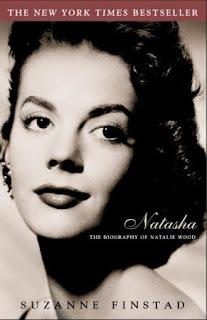
Anyone who even only saw 'Gypsy' (1962) would have been taken by this seemingly fresh, stunning talent. But this child veteran screen legend had already long since cemented her place in the Hollywood history with great films like 'Miracle on 34th Street' (1947).
Born in San Francisco to Russian immigrant parents, Wood also spoke Russian and was proud of her heritage. She was pushed as a toddler, by her mother, into films.
At nine she was named the 'most exciting juvenile motion picture star of the year'. Three years on, she was judged Child Star of the Year by the Children's Day National Council of New York.
Successfully transitioning from child star to ingenue at sixteen, she co-starred with James Dean and Sal Mineo in 'Rebel Without a Cause', (1955). For this Natalie was nominated for a Best Supporting Actress Academy Award.
In 1961, Wood played Maria in the musical 'West Side Story', a major box office and critical success. That same year she appeared opposite Warren Beatty in Elia Kazan's 'Splendor in the Grass', earning Best Actress Nominations at the Academy Awards, Golden Globes and BAFTAs.
She managed longevity as well as was possible, maturing appropriately into more adult productions like 'Bob & Carol & Ted & Alice' (1969), a comedy about sexual liberation.
After that she got the idea into her head that family must come first, that her movie career was finished. Had she lived into old age she may well have become what actresses like the wonderful Lauren Bacall did - a living legend. She was already close.
There was her extraordinary beauty, her two marriages to the one man, heart throb Robert Wagner and, finally, her tragic premature death by drowning, fulfilling her worst fear (of water).
This is a well-researched, quality biography that does Natalie justice. We are left feeling informed, satisfied, without having intruded too crassly into this star's personal life. We feel we have celebrated a likeable woman with a fascinating career. And a little sad for her.
A tasteful tribute by a classy writer on a true and timeless star.
My review of The Stranger, by Albert Camus

Almost anyone can relate to life's absurdities which French Nobel Prize-winning author, journalist and philosopher Albert Camus conveyed with such brilliance.
The narrator of this is Meursault, a French Algerian. Unconcerned about how others see him, Meursault always speaks his mind, so is seen by society as a stranger because of his frank indifference.
Meursault is no less indifferent to learning of his mother's death, by telegram, as anything else. After attending her funeral, he kills an Arab man and when tried is openly remorseless. The tale is told two parts: Meursault's point of view before and after the murder.
For this reader, it's not so much the particular tale that he's telling, the places or the people, it's the subtext to it all, the message behind his tale. In fact, it's what he's not saying (because he doesn't need to spell it out) that resonates.
Though Camus famously refused to be labelled an 'existentialist' writer, this 1942 book became the inspiration behind so many such works. I really wanted to meet the man, share a carafe of wine in some rundown old place by the sea and lend him my ear.
The Stranger remains a timeless classic which deserves not to be skipped by anyone.
March 29, 2025
My review of Missus, by Ruth Park
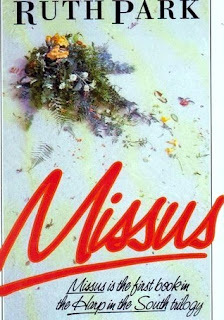
Like all exceptional novelists, the late Ruth Park employed a simplistic yet captivating insight of the human condition. This set her work apart from the workaday potboiler that simply churns out juicy formulaic plotlines. Her work is purely character driven, their storylines organic by-products of characters' endearing quirks and peculiar choices.
This is what made her a literary writer, rather than a fast fiction or romance machine of the Barbara Cartland ilk. Her characters are blessed and burdened with the virtues, shortcomings and consequent dilemmas of ourselves and our loved ones, universal qualities and quandaries that resonate with our inner philosopher.
Her settings, whether city slum or outback dustbowl, are vivid, poignant and glorious. Her understated period detail is delicious in the many flashbacks. So completely does she transport us to other times and places, we feel that gratifying sense of escape that we read for. This raw literary talent shines across all three novels in the series.
This third and final instalment in Park's prestigious trilogy, the prequel, Missus, begins in the 1920s. Our beloved established characters become less central presences, absentee players for much of the novel, contemplated and discussed by others.
I would have liked more focus on our familiar people, less on their multitudinous forebears and offsiders. I was interested in the trajectory of Hughie and Margaret's pairing, prior to their Sydney transfer and offspring that form the next two novels.
I appreciated this necessity of new protagonists. What I had not envisaged was their persistent dominance and high numbers, many being arguably quite extraneous. Though some were absorbing, this matrix of 'others' pushes aside our special people.
Whilst feeling compensated with certain of Park's other characters, I skimmed many of their scenes, picking out my own characters' episodes, tying in their histories. Though this perhaps typifies prequels, it was also as if Park became uneasy staying with these characters from previous instalments, or just too bored with them to give them the space I wanted for them.
Or maybe we're meant to approach this as a standalone piece. If so, then the publisher's pitching becomes questionable.
None of the above issues affect the quality of prose, as rich, even richer in parts, than in the other two The Harp in the South books, perhaps because by this book she was nearly forty years more practised than with the first two.
Missus, like its sibling novels, transcends family saga into a wider social critique, an intimate study of human emotion. Its stylistic supremacy is evident from the opening lines, hence my four stars despite my other misgivings covered here.
This is interwar regional Australia, its ethos, its people, its places, told by one of the finest.
My review of Hard Road: The Life and Times of Stevie Wright, by Glenn Goldsmith

It was the '60s. I was a boy growing up in the UK. Pop groups were our idols, their sounds our mantras. The Easybeats sound was no less impactful than that of the Beatles, The Stones, The Who, The Kinks, The Animals or any other such band of the hour.
Their front man, Stevie Wright, was among those immortals whose every crackly radio lyric we hung onto, whose spot lit forms we gazed at in wonder on our snowy black and white TV screens. Their voices we emulated at play, spun round our heads as we fell asleep at night and, as with everything else we internalised, remains in our heads 50-plus years on.
Wright was a remarkable performance talent who sprang from nowhere at the right moment, then paid his industry dues in reaching the top. Like the mythical Icarus who burnt his wings flying too close to the sun, or the cat with its nine lives, Wright would survive the seemingly impossible for way, way longer than fathomable. Others have gone the same way, of course, while an ever-shrinking handful of his contemporaries, incredibly, live on.
So many of this generation walked similar paths to this hard living music industry legend, if minus his fame or notoriety. Few had as far to fall as Stevie Wright. But the sex, drugs and rock were the cultural, generational binder. We were all components of the counterculture revolution, some infamous, most unheard of.
I searched high and low for this book, albeit thirteen years after its release (to say I have a long reading list is a mild understatement!). After awaiting its arrival, on tenterhooks, I took it to bed at 7 and 8 p.m., like a jealous, obsessive teenager, for the best part of a week until closing the last page.
Far from the tacky kiss-and-tell performance of some like it, this impeccably documented account of an icon's darker side is penned with compassion, respect and integrity. One of those rare, classy efforts readers so often hope for but are only sometimes delivered.
A heartwarming trip down Nostalgia Street for the first half, hysterically tragicomic for the second, by turns almost unreadably heart wrenching, devastating as it nears conclusion.
I laughed, I cried, I nearly bought a round.
Full marks to author Glenn Goldsmith who, besides having a musical career of his own, was Stevie Wright's Musical Director and Tour Manager in the late '80s.
Pure class, Mr. Goldsmith. You've done Stevie proud.
My review of After Leaving Mr. Mackenzie, by Jean Rhys
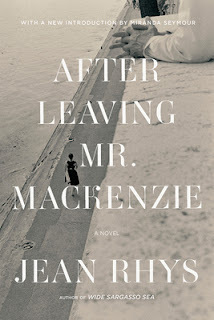
This is the delectable Jean Rhys at her very best. She has our central character deliciously sussed out. We know her shortcomings and want to help her out - it's a tough life out there for Julia Martin. Hell, it's a goddam jungle.
Some of this underdog protagonist's wry observations are as bluntly incisive as Rhys's narrative observation of her:
'Of course she had some pathetic illusions about herself or she would not be able to go on living.'
'It's so easy to make a person who hasn't got anything seem wrong.'
'If all good, respectable people had one face, I'd spit in it.'
And so on.
Released in 1931, three years after Quartet, this was Rhys's second published novel, which she wrote and had published when she was 41. One reviewer called this material from her early period 'sordid'. It would be another 36 years before the starchy literary establishment acknowledged her with the 1967 WH Smith Literary Award, of which she said only, in that characteristic understated way she had with irony and words: 'It has come too late.'
I laugh out loud and cry a little whenever I read Mackenzie, just as I so often do when reading any of this formidable author's work.
This novel should, like all her others of this period, have been far more successful than it was in its day, just as its Jean Rhys should have been given far greater recognition, far sooner, for her extraordinary talent. She was a proud pariah though and swallowed down her lot, along with a rather lot of gin and who could blame her?
It would be criminal for any serious reader or writer to let this, or any other Jean Rhys novel escape their attention. Treat yourself to this fabulously rocky, rollercoaster ride down the gurgler in silk stockings - you deserve it.
Then read it again and see what you missed.
My review of The Catcher in the Rye, by J.D. Salinger
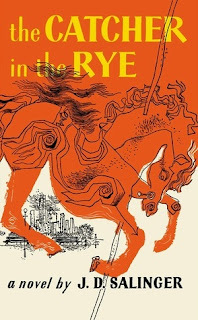
This was the first book I read as a young adult. An inexperienced reader, I had been too busy living and suddenly felt I was missing out on books, so had asked around for something to help get me into reading.
I glanced casually through the pages on a two-month coach trip around Australia's red centre. Then I reread it more closely, then again intensely, and a breakthrough occurred for me. It was the perfect beginning of a long and winding reading road for me.
I related closely to narrator Holden Caulfield, empathising with his internal frictions and dilemmas as I gazed from my coach window at the wilderness rush by. This book deals with those complex yet universal issues of personal identity, belonging, connection and alienation.
Providing a journey within my journey, J. D. Salinger became a close, early travel buddy I'll never forget and will remain ever thankful to.
An instant hit when published in 1951, The Catcher in the Rye has been translated into almost every language and still sells around 250,000 annually, totalling around 65 million books, its protagonist becoming an icon for teenage rebellion and attracting extremist Conservative criticism.
Through the 1960s & '70s it was the most censored book in American high schools and libraries. By 1978 it was banned in Issaquah, Washington, high schools, as being part of an 'overall communist plot.' As late as 1981 it was America's most censored yet most taught book in public schools. The American Library Association called it the 1990s' tenth most frequently challenged book.
Those alarmist challenges, by hysterical right-wing zealots, surrounded Holden's characteristic teenage vulgar language, sexual references, blasphemy, alleged undermining of family values and moral codes, being a poor role model, encouragement of rebellion, and promotion of drinking, smoking, lying and promiscuity. Typically, the challengers have been unfamiliar with the plot.
Numerous shootings have even been associated with the novel, including an assassination attempt on Ronald Reagan. John Lennon's assassin was arrested with a copy of the book he had purchased that day.
As its critics have expired, however, the book has survived, becoming a timeless, fondly preserved classic. Stale, overblown controversies aside, I can't imagine anyone not adoring this gorgeous ride.
Read it and tell me I'm wrong.
My review of The Gunpowder Plot: Terror and Faith in 1605, by Antonia Fraser
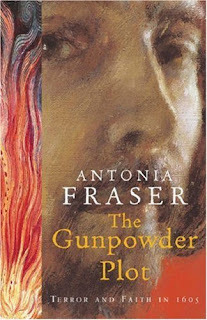
Whatever Lady Antonia Fraser wrote about - I'm sure I could read her shopping lists and be entertained - would be worth reading. The lady is perhaps my favourite mistress of this genre. Not simply erudite, eloquent and formidably well educated, she's genuinely talented. Such is the key to her success and longevity.
It came as no surprise, therefore, that what has to me been one of the most excruciatingly boring episodes in history to glean facts from, was here made gripping material that refused to be put down. Why couldn't we have had such reading at school? People can't help learning when drinking up such words.
It's unnecessary to outline here what the failed Gunpowder Plot was, with Guy Fawkes night such a culturally ingrained institution. What makes Fraser's history of its advent so coherent is, as always, her elaboration of the characters, their background, their motives, etc.
Just her broader insight into James I & VI's kingship was enough for this reader. His was never a time that resonated for me in other reading, yet here he is given life I had previously begged for in other works to gain just basic insight.
Callously indifferent to his mother's cruel fate, displaying not an ounce of filial loyalty, this maternally disdainful overly precious self-serving brat spent his Scottish days awaiting Elizabeth I's death. Baring a nauseatingly acquiescent grin from afar he anchored her favour as heir.
As if dancing, satin-shoed, on Gloriana's grave, he then minced brashly around her crumbling English palaces whose days of pomp and finery were gone before she lay cold. Ostentatiously bejewelled, in dusty ermine, swirling velvet, fluttering cloth of gold and ermine, he flirted audaciously with male favourites, in an unfathomable Scottish brogue. He stank. Behind him trailed a grubby, uncouth imported entourage that echoed his foreign tongue, stank just as badly and collectively got up everyone's nose. Yet James was impervious to the resulting courtly consternation. Not entirely facile, he was icily shrewd, calculating like his great great grandfather Henry VII. He also sponsored translation of the Bible named after him: the Authorised King James Version.
I still didn't warm to him though, but didn't need to.
It's astonishing that any son of so fascinating a legend as my favourite tragedienne, the martyred Mary, Queen of Scots, could have turned out so drab to eke out depth or meaning from! He would surely have been so reviled for his boringness alone; that in itself would justify the hatching of any plot. (In fact, this plot targeted the House of Lords rather than the king specifically. James's rule and its incidentals personified that target though.)
Contrasting with his predecessor Elizabeth I, her sister 'Bloody' Mary I and father Henry VIII, slithery James I lacked fire, conviction, had a spinelessness, a wateriness I find hard to get my teeth into. Yet Lady Fraser overrides this obstacle with all of her usual panache.
Guy Fawkes himself was little more interesting than King James, yet here we have all we need on him, fleshed out via 'that' satisfying Fraseresque treatment she is renowned and revered for.
The politics around the plot are, by any other account I've read, dry, monotonous and interminably convoluted, particularly for those not instinctively drawn to the Jacobean era. Not a patch on all things Tudor despite being immediately adjoined to its timeframe. Yet these politics, too, are here given context, explained patiently and meticulously. On this I knew I would be able to rely, having relished other such Fraser books. Like a child in a hearth I sat, glued, welcoming the magic of this storyteller's voice.
Like I said at the start, it wouldn't have mattered what it was about, it was always going to be special. It was, it is. I was finally able to learn things I didn't know about this fiasco, minus that dreaded textbook tedium that creeps into other accounts (oh woe, oh woe!).
Recommended especially to those who, like this reader, need more than a dry old listing of dates and names to get through this done-to-death tale to broaden their knowledge.
(Would have given it 5 stars but knocked off a half for my undying dislike of all things James I & VI - give me his neurotic mother any day, or even his sleazy grandson Charles II - and another half for whoever chose that ludicrous e-cover art.)
My review of I Know Why the Caged Bird Sings, by Maya Angelou
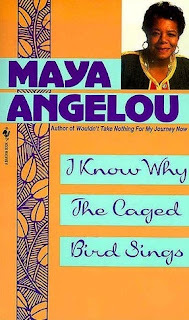
Maya Angelou's recollection of her first seventeen years had me spellbound on first reading. In the world's mourning fortnight after her passing, I meditatively reread this first and most highly acclaimed of her seven autobiographies.
Here was one master storyteller, a formidable intellect with a heart of pure, solid gold. Caged Bird catapulted Angelou to international fame and critical acclaim in 1969, launching a literary career that brought her dozens of awards and 30-odd honorary doctoral degrees.
While the conservative literary commentariat labelled this 'autobiographical fiction' because of Angelou's use of thematic development and other techniques common to fiction, the overruling consensus recognises it as true autobiography, but a genre she critiqued, changed and expanded.
Her use of understatement, self-mockery, humour and irony won hearts globally, despite right-wing objections to her depictions of lesbianism, premarital cohabitation, pornography and violence.
Though her graphic depictions of childhood rape, racism, and sexuality saw this book banned from many school curricula and library shelves, more have stuck loyally with it.
Her humour, drawn from Black folklore, sent strength to not only her ethnic tribal survivors of racism and oppression, it reached out to all, resonating especially for women of all shades and minority group readers of each conceivable kind. In parts so intimately told it was like sitting in her parlour, listening to her over coffee and cookies.
Her famously incisive take on society glows succinctly through each chapter and verse. I felt honoured to have been let in on her astonishing life.
Thank you, Maya Angelou, you were one gutsy, mindful saint who told it like it was with unparalleled grace and candour. You were a rare and precious role model for all who strive to express themselves through the written word. You lent spirit to generations and will continue to.
My review of Two Queens in One Isle: The Deadly Relationship of Elizabeth I & Mary Queen of Scots, by Alison Plowden
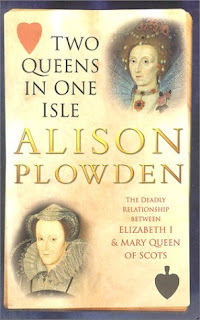
Alison Plowden's history of these cousin queens, Protestant Elizabeth I of England and Catholic Mary of Scots, is enthralling.
It is near impossible, after reading material such as this, to side with one queen or the other. Each was arguably at fault and justified in her treatment of the other. Mary came off the worst to lioness Bess.
The backstory is that the teenaged Mary, when queen consort of France, had once claimed the so called 'illegitimate' Elizabeth's throne as her own and was considered the legitimate sovereign of England by many English Catholics.
Mary became widowed young in France, returning to Scotland where she had not lived since her infancy. She was not embraced for long by her Protestant Scottish subjects or Lords who had other plans for Scotland's rulership than allowing a woman and Catholic reign.
After the suspicious murder of Mary's despised second husband, Elizabeth's cousin Darnley, abruptly followed by her remarriage to Darnley's suspected assassin, Bothwell, Mary was overthrown and imprisoned. After several failed attempts she escaped, fleeing south to England, seeking Elizabeth's support and protection. Dishevelled, Mary was taken aback when, rather than being led to the anticipated hospitality of Elizabeth's court, she was taken into 'protective custody' by English officials.
Mary expected Elizabeth to help her regain her throne, but wily Elizabeth characteristically prevaricated, instead holding Mary 'temporarily' captive. This was officially for Mary's protection while Elizabeth ordered inquiries into the conduct of Mary's rebels. She also, however, ordered inquiries into Mary's alleged complicity in Darnley's murder plot, ostensibly so as to clear Mary's name in making way for her proposed reinstatement to Scottish rulership.
Without direct royal heirs and seeing the younger, more beautiful and fecund Mary as a threat if released, the perpetually unmarried Elizabeth kept Mary confined in English castles and manor houses for almost nineteen years.
After understandably conspiring towards her liberty, at whatever cost, desperate and isolated Mary was made a figurehead for numerous Catholic conspiracies to dethrone Elizabeth. Deemed by Elizabeth's councillors too dangerous to live, Mary was entrapped. On somewhat trumped-up charges, she was convicted for plotting Elizabeth's assassination. Executed, Mary became martyrised throughout Catholic Christendom.
Mary's unprecedented royal execution was one official rationale behind Catholic Phillip II of Spain's failed invasion of England with his Armada. Elizabeth was branded a heretic by the pope, who sanctioned Phillip's Armanda, calling for Elizabeth's dethronement. With the English Channel's stormy weather on Elizabeth's side, the English fleet, under vice admiral Francis Drake, famously saw them off.
The two queens are adjacently entombed in Westminster Abbey, Mary's being the grander piece commissioned by her son, King James VI & I of Scotland and England, who had Mary reinterred from her original, less salubrious resting place of Elizabeth's approval.
Ultimately, everyone makes up their own mind over which was the heroine and which the villainess - there's a little of each in both queens.
A fascinating and informative read.
My review of Billy Liar, by Keith Waterhouse
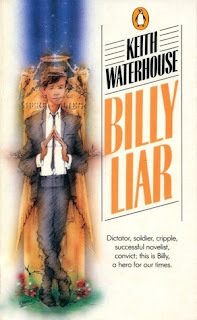
This popular 1959 novel was adapted into a successful three act West End play starring Albert Finney, which enjoyed enough success to then tour globally. The acclaimed 1963 film starred Tom Courtenay and Julie Christie, featuring the marvellous veteran Mona Washbourne, legendary comic Wilfred Pickles and an early big screen appearance by funny man Leonard Rossiter, who would later become a household name in TV's hilarious Rising Damp. A 1973 London Weekend Television series followed, before a blockbuster West End musical at the Theatre Royal, Drury Lane. The latter (1974) ran for 904 performance and starred Michael Crawford, featuring a practically unheard-of Elaine Paige.
Poor naïve young Billy's a bit of a lad but a good, honest one, learning keenly and clumsily about the opposite sex and forever daydreaming of his own personal fantasy world not so that unlike his real one, neither place being all that flash.
His daydreams are attempts at escaping the tedium and isolation of his very ordinary work and home life. His girlfriends are difficult, foreign creatures. His workmates and bosses can be scoundrels. His comical family is ever-present but seldom really there for him.
This amusing journey is a snapshot in time. Nothing magnificent, fancy or complex, just an honest, straight forward read, maybe for those in need of a simplistic diversion from heavier stuff.
It somehow dug itself a special place in my literary memories. And that's saying something for such a light-hearted read.



